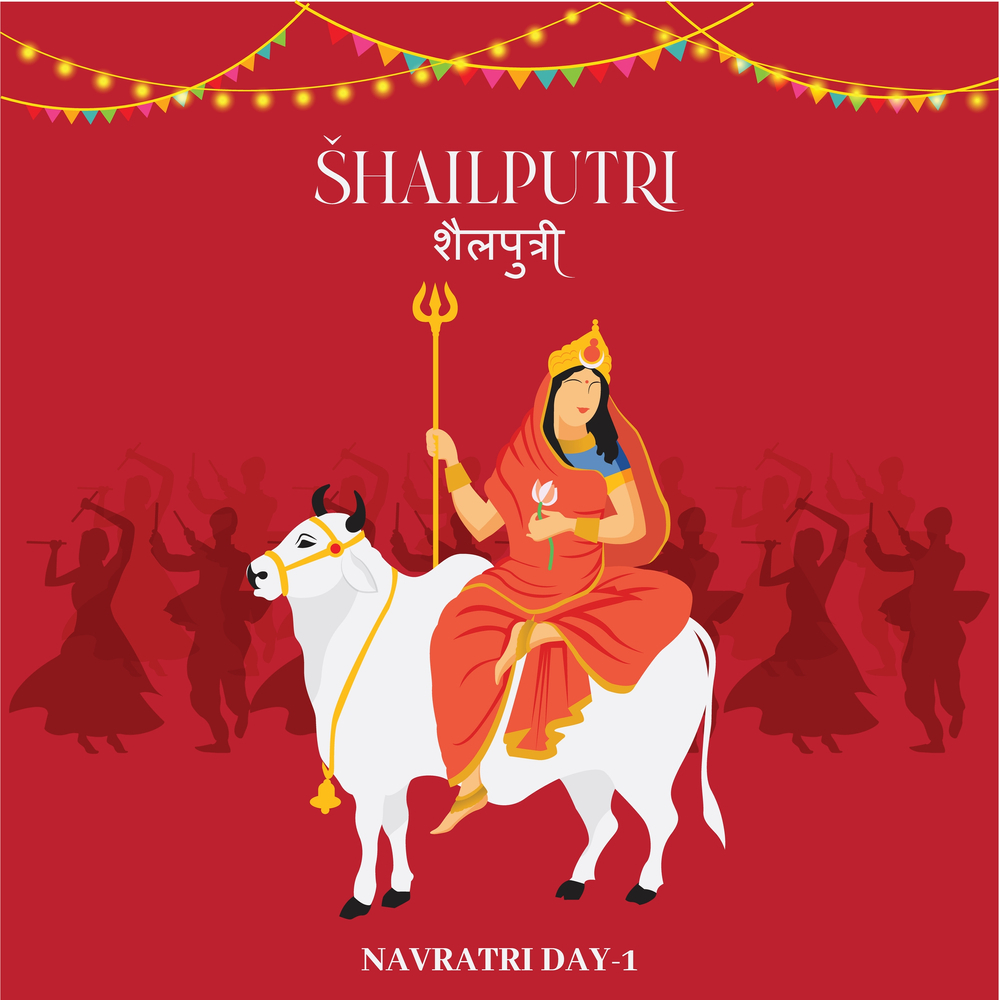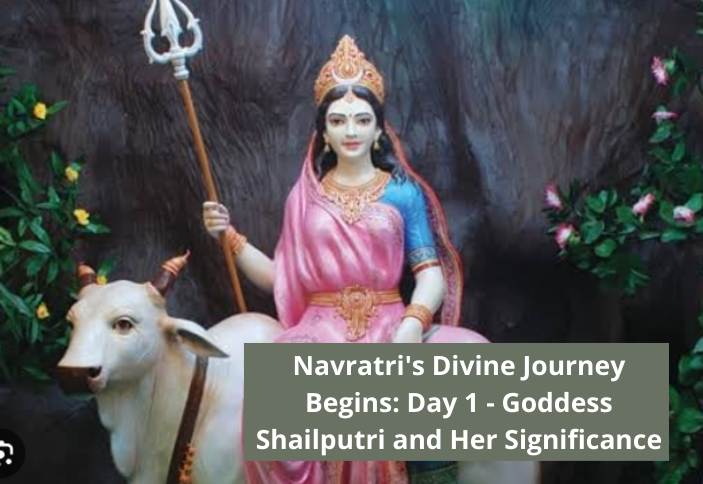The joyous festival of Navratri marks the celebration of the divine feminine and the triumph of good over evil. It’s a time when devotees across the country come together to worship the nine manifestations of Goddess Durga. Each day of Navratri is dedicated to a different form of the goddess, known as an “avatar.” On the Goddess Shailputri- Day-1, who holds a unique significance in the hearts of the faithful.
Goddess Shailputri
The Daughter of the Mountain
Goddess Shailputri, whose name is a fusion of “shail“ meaning mountain and “putri” meaning daughter, is the first avatar of Goddess Durga. She is often referred to as “Daughter of the Mountain,” as she is believed to be the daughter of King Daksha and the consort of Lord Shiva, who is often depicted as residing in the Himalayas. In Sanskrit, “Shailputri” translates to “Daughter of the Mountain.
The Iconography of Goddess Shailputri
Goddess Shailputri is typically depicted riding a white bull, known as Nandi, which is Lord Shiva’s mount. In her two hands, she holds a Trishul (trident), symbolizing the three gunas (qualities) of sattva, rajas, and tamas, and a lotus, representing purity and spirituality. Her gentle and radiant presence exudes a sense of serenity and grace.

Significance of the First Day of Navratri
The first day of Navratri is dedicated to Goddess Shailputri, and it carries a profound significance in the Hindu tradition. Devotees believe that worshipping her on this day brings health and strength. The offering of pure desi ghee and food prepared with it is a customary way to seek her blessings. The purity of ghee reflects the desire for a healthy and wholesome life, and it symbolizes the offering of the best to the goddess.
The Symbolism of the Color Orange
Goddess Shailputri’s favorite color is orange, which is symbolic of energy and optimism. Orange radiates warmth and positivity, much like the sun’s first rays at dawn. On this day, devotees adorn themselves and their surroundings with this vibrant hue to embrace the enthusiasm and courage that the color signifies.
The Spiritual Message
Beyond the rituals and offerings, the worship of Goddess Shailputri imparts a profound spiritual message. She embodies the essence of purity and serenity, residing amidst the rugged terrain of the Himalayas. Her association with the mountain signifies her steadfast nature, her unwavering commitment to truth, and her ability to endure challenges.
As we invoke Goddess Shailputri Day-1 of navratri, we seek her blessings not only for physical well-being but also for inner strength and determination. She reminds us that, like a mountain, we too can stand strong and unshaken in the face of life’s trials. Her trident and lotus symbolize the delicate balance of power and grace that we should aim to achieve in our own lives.
As the first day of Navratri draws to a close, we have embarked on this spiritual journey with reverence for Goddess Shailputri, learning from her unwavering commitment to truth and her ability to endure all challenges. Just as she is the “Daughter of the Mountain,” we too can stand as strong as a mountain in our own lives. Let us carry this strength, optimism, and boundless energy forward into the vibrant festivities of Navratri. And, if you’re planning to partake in the joyous dandiya and garba events, remember that Geniefie Trip Planner App is there to help you create customized itineraries for a memorable and seamless experience throughout this auspicious celebration. Wishing you a Navratri filled with devotion, dance, and the radiant spirit of Goddess Shailputri.
So, lets stay connected for your next adventure!
GENIEFIE TRIP PLANNER

